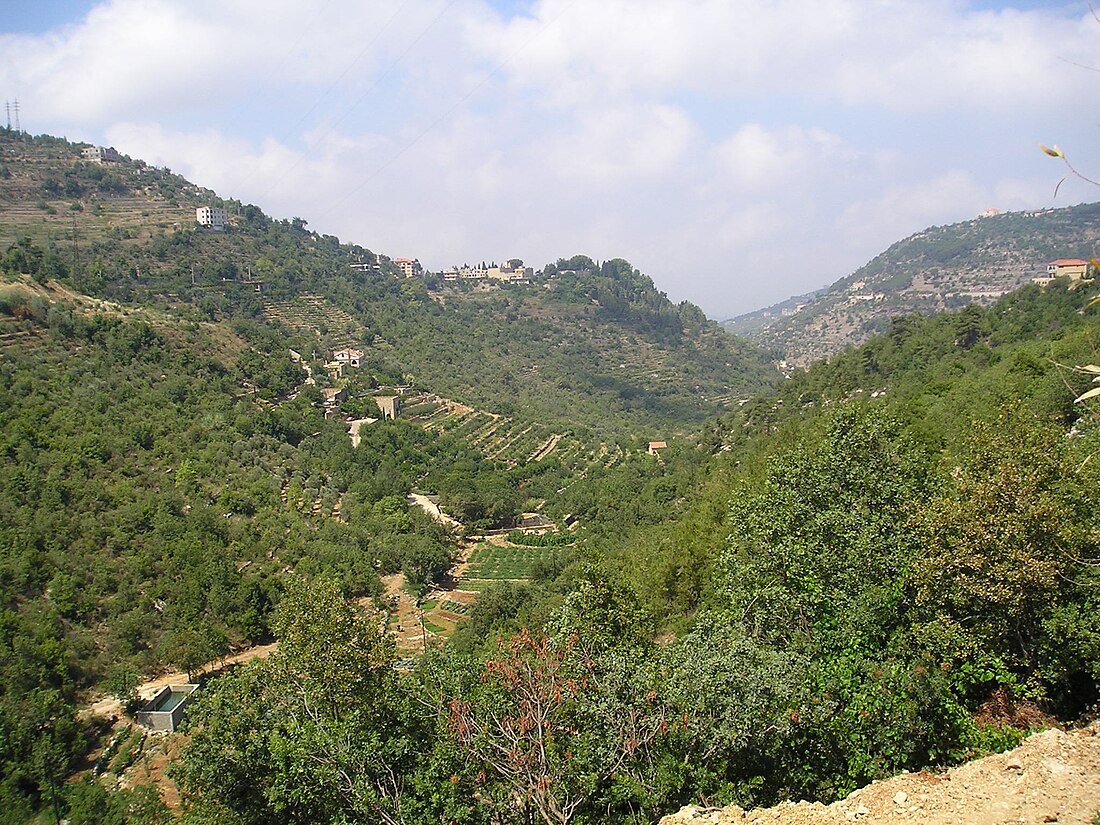Top Qs
Timeline
Chat
Perspective
Chouf District
District in Mount Lebanon Governorate, Lebanon From Wikipedia, the free encyclopedia
Remove ads
Chouf (also spelled Shouf, Shuf or Chuf; Arabic: جبل الشوف, romanized: Jabal ash-Shouf) is a historic region of Lebanon, as well as an administrative district in the governorate (muhafazat) of Mount Lebanon.
Remove ads
Geography
Located south-east of Beirut, the region comprises a narrow coastal strip notable for the Christian town of Damour, and the valleys and mountains of the western slopes of Jabal Barouk, the name of the local Mount Lebanon massif, on which the largest forest of Cedars of Lebanon is found. The mountains are high enough to receive snow.
History
Summarize
Perspective



The Emirs of Mount Lebanon resided in Chouf, most notably Druze Emir Fakhr al-Din II, who attained considerable power and autonomy from the Ottoman Empire in the 17th century. He is often referred to as the founder of modern Lebanon although his area of influence and control included parts of Palestine and Syria. Another emir is Bachir Chehab II, who built the palace of Beiteddine during the first half of the 19th century. Deir al Qamar (the monastery of the Moon) is also in the Chouf region.
The relationship between the Druze and Christians in Chouf was characterized by peaceful coexistence.[2] In the early eighteenth century, the communities lived side by side in relative harmony.[3]
However, in 1848, 1860, and again in 1983-1984, during the Lebanese Civil War (Mountain War, Arabic: Harb el-Jabal), fighting broke out between the Christian and Druze communities in the Chouf.
At the end of January 1989, Druze leader Walid Jumblatt, who lived at the Jumblatt palace in the town of Moukhtara, came up with a plan to help Christians return to their homes after an estimated 300,000 had fled during the fighting. The initiative was supported by Dany Chamoun. In March the plan was shelved following General Michel Aoun’s blockade of the Druze port at Jieh, his shelling of Souq El Gharb and the assassination of one of Jumblatt’s top aides.[4][5] Reconciliation between the Druze and Christian communities was achieved on August 8, 2001, when the Maronite Patriarch of Antioch, Cardinal Mar Nasrallah Boutros Sfeir made a historic visit to the Chouf and met with Jumblatt.
In 1989, Israel carried out air-strikes on the Chouf a few yards from a school. Two militants were killed and several schoolchildren were wounded in the attack.[6]
Remove ads
Demographics
According to voter registration in 2014:
See also
- Iqlim al-Kharrub, historical region located in the Chouf District
References
Wikiwand - on
Seamless Wikipedia browsing. On steroids.
Remove ads


